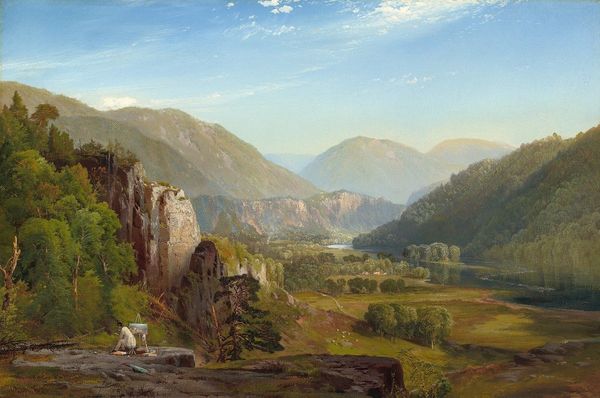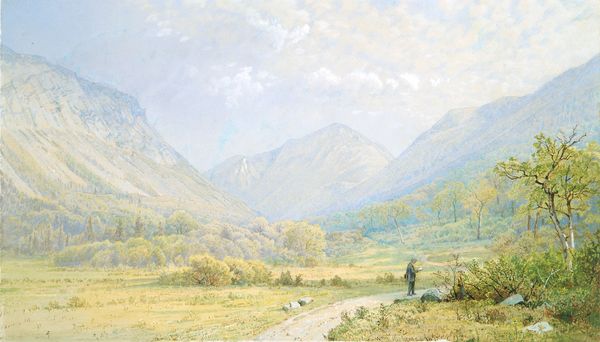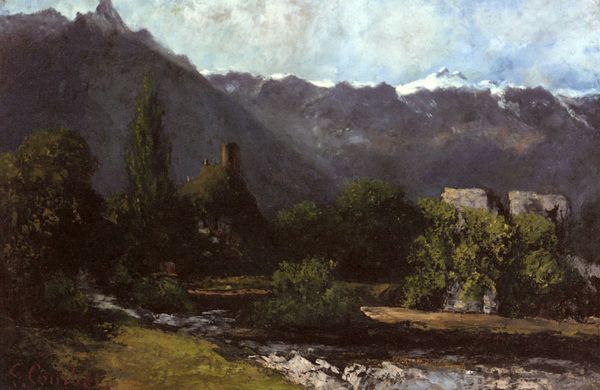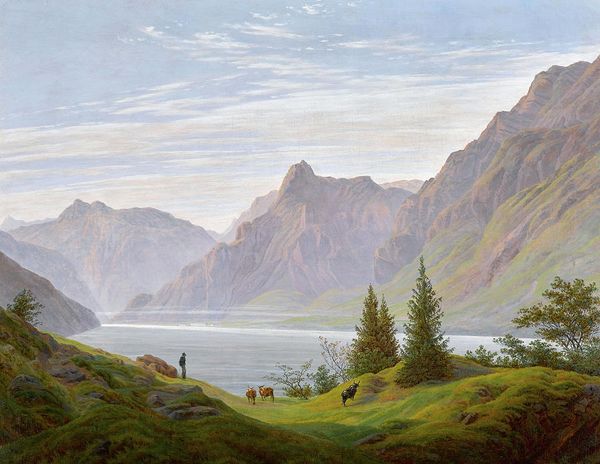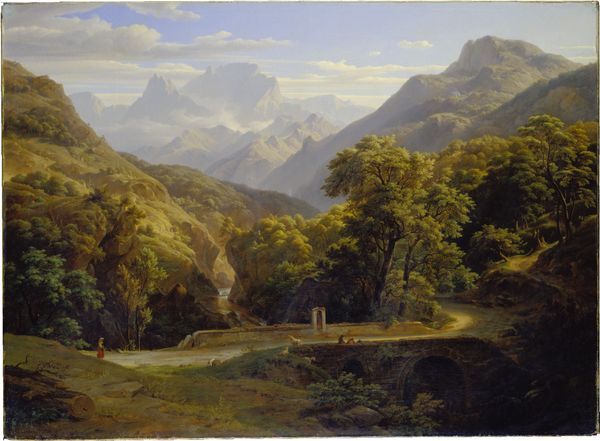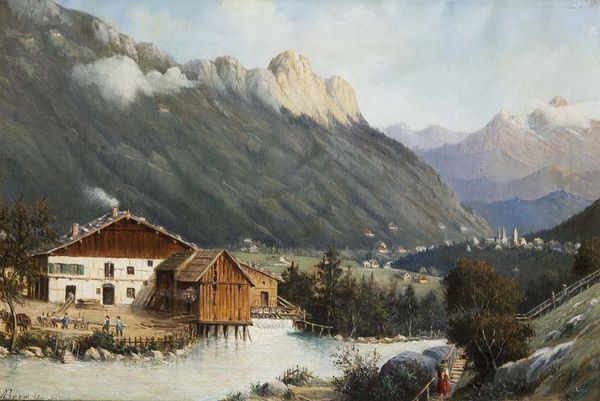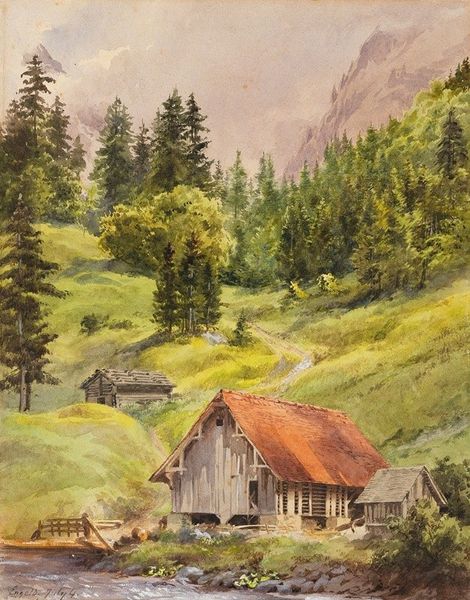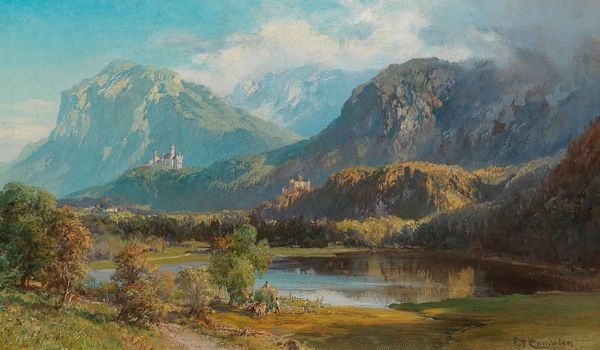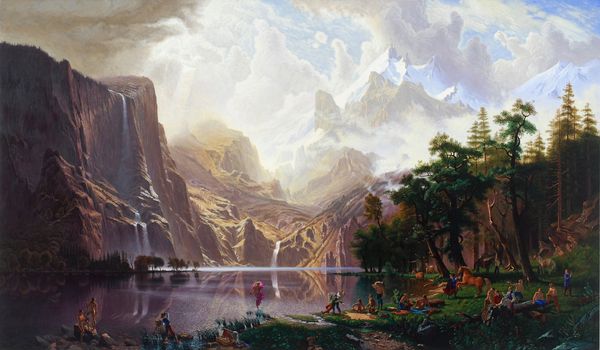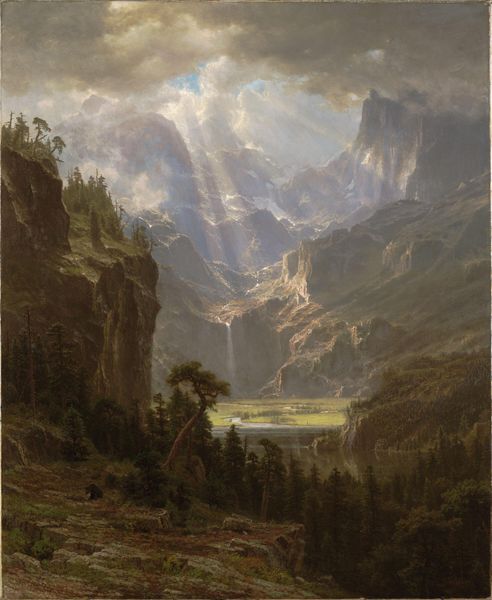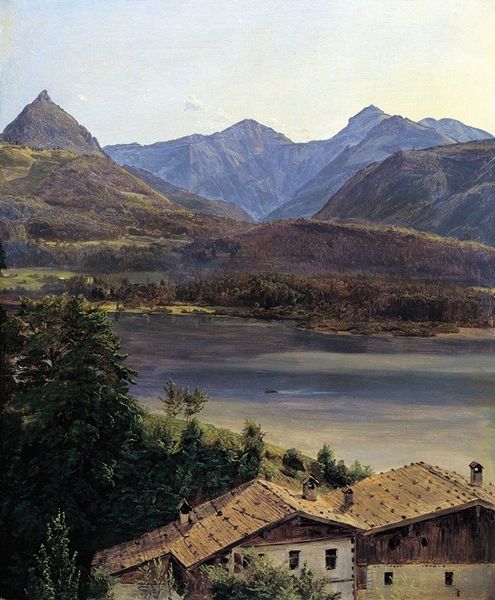
Copyright: Public domain
Editor: Lev Lagorio's "Caucasian Canyon," painted in 1893 with oil paint, depicts a vast landscape. There's almost a sense of melancholy that comes through, with the ruined tower and muted colors. What catches your eye in terms of form and composition? Curator: The formal elements orchestrate the eye’s movement, directing it from the foreground, with its architectural details, towards the distant, dissolving mountains. Notice how Lagorio uses the river as a compositional guide, its winding form carving space into distinct planes. Observe how tonal gradations imply depth and atmosphere. How does this structuring contribute to the painting's affect? Editor: I suppose the subdued palette emphasizes the distance and makes the landscape feel almost limitless, and slightly desolate. I hadn't considered how carefully the river guides my view into the depths. What does the tower's ruin signify here, formally? Curator: Formally, the ruin anchors the composition and offers a counterpoint to the organic forms surrounding it. It disrupts an otherwise entirely natural landscape. It presents a vertical emphasis within the composition. What do you make of how light models the forms within the structure itself? Editor: Now that you point it out, I notice the shadow playing across its crumbling walls. The way the building's structure opposes nature makes the painting's open valley seem even bigger. I didn’t consider how this tower helps me to perceive how large the Caucasus canyon is. Thank you! Curator: And thank you. Considering such formal strategies will allow us deeper entry into artwork of varied context and aesthetic persuasion.
Comments
No comments
Be the first to comment and join the conversation on the ultimate creative platform.

